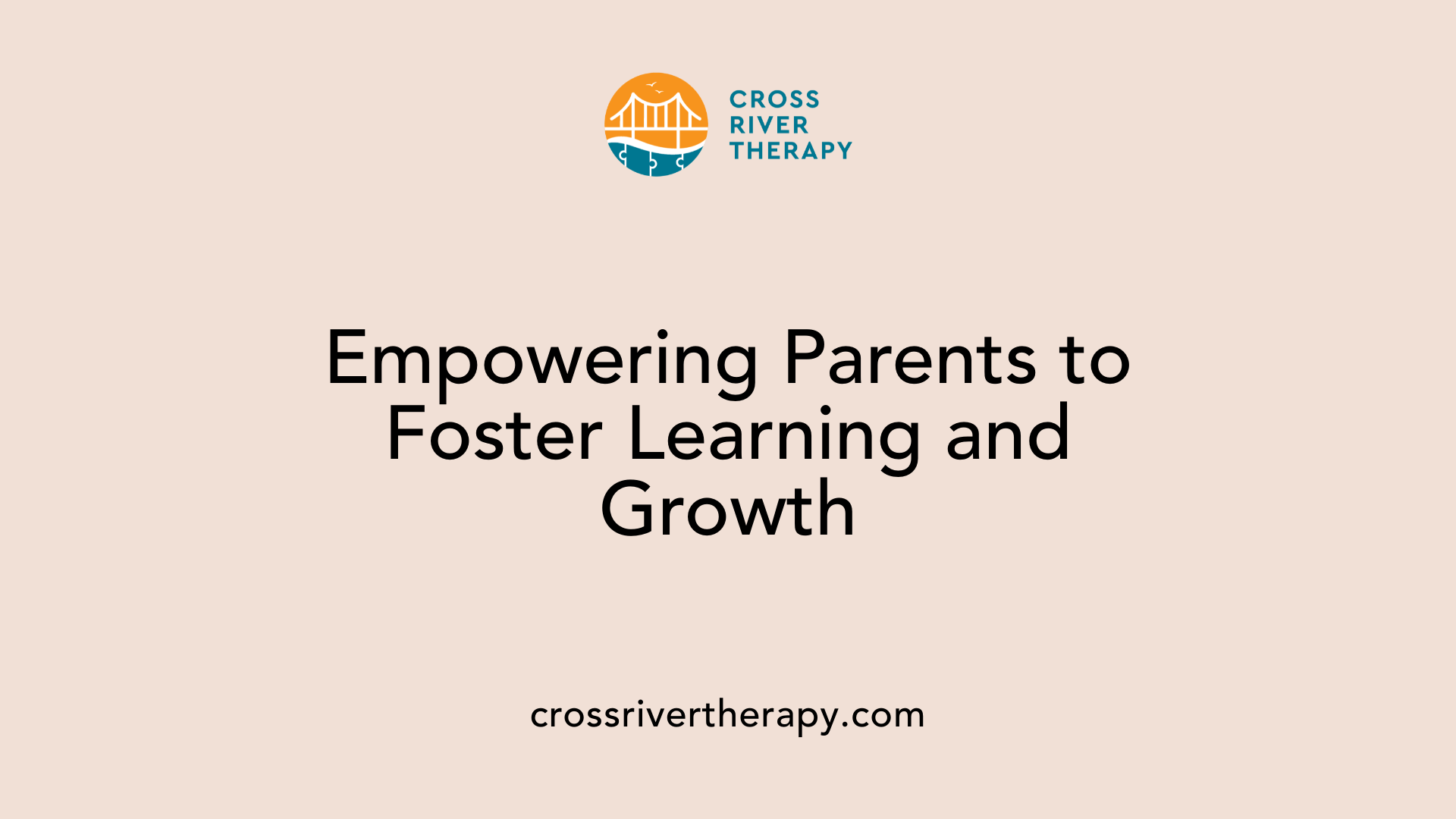How At-Home ABA Therapy Strengthens Parent-Child Bonds
Nurturing Connections: The Role of At-Home ABA Therapy in Parent-Child Relationships
The Impact of In-Home ABA Therapy on Family Dynamics
Applied Behavior Analysis (ABA) therapy is a vital intervention for children with autism spectrum disorder (ASD) that not only aids in their developmental progress but also has profound implications for strengthening the parent-child bond. When conducted at home, ABA therapy creates unique opportunities for parents to engage deeply in their child's learning journey, fostering emotional connections and shared achievements. This article explores the multifaceted ways in which at-home ABA therapy enhances family relationships, offering insights and practical advice for parents seeking to support their child's growth and development.
Implementing ABA Therapy at Home

Techniques for Parents
Parents play an essential role in extending ABA therapy beyond clinical settings. To effectively help their children with autism, they can incorporate structured routines and clear expectations into daily life. Starting with specific behavioral goals—such as enhancing communication or encouraging social interactions—helps in directing efforts to promote skill development.
Positive Reinforcement
Using positive reinforcement is crucial. When children exhibit desired behaviors, rewards such as verbal praise, stickers, or special privileges can motivate them to repeat those actions. This connection between behavior and positive feedback enhances learning and fosters emotional bonds, making the child feel valued and understood.
Role-playing
Role-playing can serve as a powerful tool for parents. By modeling appropriate behaviors and facilitating practice opportunities, parents can help children generalize skills in a relational context. With consistency and patience, parents can assist their children in recognizing and applying learned behaviors in everyday situations.
| Strategy | Description | Benefits |
|---|---|---|
| Structured Routines | Establish clear daily activities and expectations | Enhances understanding and predictability |
| Positive Reinforcement | Use rewards for desired behaviors | Boosts motivation and reinforces learning |
| Role-playing | Demonstrate and practice behaviors in real situations | Helps with generalization and social interactions |
Through these techniques, parents not only assist in their child’s development but also build stronger familial connections by engaging in shared learning experiences.
Benefits of Home-Based ABA Therapy

What are the benefits of conducting ABA therapy at home for children with autism?
Conducting ABA therapy at home for children with autism offers a multitude of advantages that significantly enhance their learning experience. One of the primary benefits is that children learn more effectively in familiar environments. This comfort boosts their ability to generalize the skills acquired during therapy sessions, as they feel more secure and engaged within their own surroundings.
In-home therapy also allows therapists to seamlessly integrate learning into daily routines. This makes therapy more relevant to the child’s everyday life, embedding practices and skills into typical family activities. For example, a child might practice communication skills during meal times or social interactions with siblings.
Moreover, involving parents in the therapy process empowers them to reinforce skills outside of formal sessions. When parents actively apply techniques and strategies suggested by therapists, they help maintain continuity and consistency in skill application across different settings—home, school, and even community events.
Familiar Environment and Daily Routine Integration
Home-based ABA therapy takes place in the child’s familiar environment, reducing anxiety and increasing engagement during sessions. This approach not only allows for more effective learning but also facilitates a smoother transfer of skills to real-life scenarios. By integrating therapy into daily family routines, children learn in a natural context, fostering more meaningful interactions between parents and children.
Ultimately, these experiences are shared achievements, promoting strong familial bonds as families collectively celebrate progress. The collaborative effort between parents and therapists solidifies the child's learning journey, ensuring a supportive family dynamic that goes beyond therapy sessions.
Parents as Effective ABA Facilitators

Can parents conduct ABA therapy practices effectively in a home setting?
Yes, parents can effectively conduct ABA therapy practices at home. While it does not require extensive formal training, a foundational understanding of ABA principles, time, effort, and patience are essential. Parents can actively integrate techniques such as prompting, shaping, and positive reinforcement into their daily routines, which ultimately enhances their child’s learning experience.
Creating a consistent environment at home plays a vital role in the overall success of ABA therapy. This consistency helps children generalize the skills they learn in therapy sessions to real-life situations. Furthermore, parents can collect data on their child’s progress, allowing for the refinement of techniques and ensuring that interventions are effective.
Collaborating with a Board Certified Behavior Analyst (BCBA) can significantly improve the home learning experience. A BCBA can help set up a personalized home program, providing guidance on how to implement ABA strategies effectively. This partnership not only supports the child’s progress but also fosters a collaborative relationship that strengthens the parent-child bond through shared learning.
Techniques Integration
To make ABA therapy effective at home, parents should focus on several key techniques:
- Prompting: Encouraging desired behaviors through verbal or physical cues.
- Shaping: Reinforcing small steps toward a larger behavioral goal.
- Positive Reinforcement: Rewarding desired behaviors to increase their occurrence.
By integrating these techniques into family routines, parents create a natural learning environment where children can practice skills. Engagement in this process not only boosts the child’s confidence and motivation, but also reinforces the emotional connection between parent and child.
This approach allows for a more dynamic interaction, as families celebrate milestones together, facilitating deeper engagement and mutual understanding. Overall, parental involvement in ABA therapy leads to meaningful progress, benefiting both the child’s development and the family unit.
Emotional Regulation through ABA

How does ABA therapy contribute to emotional regulation in children with autism?
ABA therapy significantly contributes to emotional regulation in children with autism by utilizing structured techniques that promote understanding and management of emotions. This therapeutic approach relies on consistent feedback and reinforcement, allowing children to learn how to identify their feelings and respond appropriately.
One of the key strategies employed in ABA is setting individualized goals that target specific emotional challenges. This personalized approach provides children with tailored strategies to handle their emotions across various situations.
Additionally, role-playing exercises and social skills training incorporated within ABA sessions create ample opportunities for children to practice emotional regulation. This practice enhances their social interactions and helps them apply learned strategies in real-life contexts.
Structured Techniques in ABA Therapy
ABA therapy uses several structured techniques to ensure effectiveness in emotional management:
| Technique | Description | Benefits |
|---|---|---|
| Positive Reinforcement | Encouraging desirable behaviors through rewards | Increases likelihood of repeating positive behaviors |
| Role-Playing | Practicing real-life social situations to enhance emotional responses | Builds confidence and prepares for real interactions |
| Visual Supports | Using visual aids to help children understand and express emotions | Enhances comprehension of emotions |
| Coping Strategies | Teaching specific techniques to handle overwhelming emotions | Empowers children to manage stress effectively |
Overall, ABA therapy fosters a supportive environment while teaching coping strategies that empower children with autism to navigate their emotional landscape more effectively. This structured approach not only aids emotional understanding but also strengthens the parent-child bond through shared learning experiences.
The Role of Consistency and Reinforcement
How does consistency in ABA therapy affect parent-child bonds?
Consistency and reinforcement are foundational aspects of Applied Behavior Analysis (ABA) therapy. When parents apply consistent strategies at home modeled during therapy, they not only reinforce their child's learning but also foster stronger parent-child bonds.
Shared activities that involve practicing newly learned skills can create a nurturing environment. Whether it’s during playtime, mealtime, or daily routines, integrating these therapeutic strategies into familiar contexts helps children practice behaviors more effectively.
By engaging in these activities, both parents and children gain mutual understanding. Parents can observe their child’s progress in real time, promoting a sense of achievement and closeness.
As parents become proactive in implementing ABA techniques, they enhance consistency across different environments—home, school, and community. This continuity is vital for long-term success, significantly enriching the parent-child relationship through collaborative efforts and shared goals.
In essence, maintaining a consistent approach not only supports the child's behavior modification but also deepens the emotional bonds between parents and their children, reinforcing their family's connection.
The Importance of Family Involvement
Supportive Environment
Family involvement in Applied Behavior Analysis (ABA) therapy is vital for creating a nurturing atmosphere. This not only occurs during therapy sessions but also extends into daily family life. As parents engage actively, they foster stronger bonds with their children, enhancing emotional support and motivation. The shared experiences during therapy can lead to a deeper understanding between parent and child, enriching their relationship.
Additionally, when parents observe therapy in real-time, they gain insights and skills they can apply at home. This immediate feedback loop transforms therapy into a collaborative experience, making it more meaningful and effective for the child’s development.
Skill Generalization
Parents play a critical role in helping children generalize the skills learned in therapy to real-life situations. By reinforcing positive behaviors associated with therapy at home, children have greater opportunities to practice these skills in a familiar context, such as with family members or in community settings.
This consistency, across environments, benefits long-term success. By incorporating therapy techniques into daily routines, parents enable their children to learn naturally, leading to more significant, meaningful interactions. Ultimately, as families celebrate milestones together, these achievements become shared victories that further strengthen their bonds.
Advocacy and Parental Empowerment

How does parental advocacy influence ABA therapy outcomes for children with autism?
Parental advocacy significantly impacts ABA therapy outcomes by ensuring that children receive the support they need. When parents take an active role, they can influence therapeutic approaches and resource allocation, allowing for structured, tailored treatment plans designed specifically for their child's unique needs. This advocacy not only aligns with their child's therapy goals but also fosters a sense of unity between parent and child.
Tailored Treatment Plans
Personalized treatment plans are crucial for effectively addressing the unique challenges faced by each child. Parents who are involved in the development of these plans can leverage their insights about their child's behaviors, strengths, and preferences. This input helps therapists create strategies that resonate well at home, and ensure skill generalization across various environments.
Collaborative Relationships
Building collaborative relationships with therapists enables parents to communicate effectively about progress and challenges. Parents who participate in therapy sessions gain real-time feedback and techniques they can implement outside of sessions, enhancing consistency and engagement. This teamwork not only improves the child's learning experience but also strengthens the parent-child bond as they work together towards shared achievements.
Building a Supportive Home Environment
Integrated Family Routines
Integrating ABA therapy into daily family life is essential for children with Autism Spectrum Disorder (ASD). Parents can leverage everyday moments—like mealtimes, playtime, or chores—to reinforce therapeutic techniques. This approach not only enhances skill acquisition but also makes learning a shared experience.
For instance, during mealtime, parents can encourage their child to practice language skills by asking open-ended questions about their day. Such interactions help children generalize communication skills beyond therapy sessions.
Daily Practice
Daily practice is vital for reinforcing the skills learned in therapy. Parents can establish consistent routines that incorporate ABA principles, allowing children to practice behaviors in safe and familiar environments.
How can families integrate ABA therapy into their daily routines? Families can integrate ABA therapy into their daily routines by incorporating therapy techniques into everyday activities. By doing so, children learn skills in a natural setting, contributing to more meaningful interactions and fostering stronger connections between parents and children through daily practice and shared experiences.
In-home therapy sessions further enrich these interactions by providing parents with the opportunity to observe, gain real-time feedback, and actively engage in their child's development, resulting in a collaborative environment that strengthens familial bonds.
Celebrating Shared Achievements
Milestone Celebration
Celebrating milestones in ABA therapy serves as a crucial aspect of fostering positive parent-child relationships. These moments of triumph, whether big or small, represent significant progress within the therapeutic journey. When families come together to recognize these achievements, it creates a sense of unity in the child’s development.
The shared acknowledgment of milestones enhances the emotional connection between parents and children. For example, celebrating a child's successful use of a new communication skill can be marked by a small family gathering or special treat, reinforcing the importance of these achievements in a supportive environment.
Reinforced Familial Bonds
Such celebrations are not just simple acknowledgments; they serve to strengthen familial bonds as parents encourage their children and foster pride in their accomplishments. By celebrating together, families cultivate a deeper understanding of each other’s efforts, promoting collaboration and synergy in their approach to therapy.
This experience of coming together for a common goal further solidifies the parent-child relationship, highlighting the importance of teamwork and shared success in the journey of ABA therapy. As milestones are celebrated, the emotional ties grow, enriching family life and enhancing the therapeutic experience.
Empowering Families Through At-Home ABA Therapy
At-home ABA therapy not only facilitates significant progress in children with autism but also creates profound opportunities for parents to engage deeply in their child's journey. By integrating therapeutic strategies into daily life, parents reinforce learned behaviors and contribute to a stable, nurturing environment that strengthens family bonds. As parents actively advocate for and support their child's development, they build a foundation of trust, understanding, and mutual growth. Through shared experiences, consistent involvement, and celebration of progress, at-home ABA therapy serves as a powerful tool for fostering deeper connections and empowering families on their unique journeys.
References
- The Role of Family in ABA Therapy: Tips for Parents
- Do Parents Stay During ABA Sessions? Understanding Your Role
- Enhance Family Life with ABA Therapy Services
- The Benefits of In-Home ABA Therapy for Children with Autism
- ABA Therapy at Home: All You Need to Know
- How parents can practice ABA skills at home - Aba Leman
- Can parents do ABA at home?
- How Parents Can Support ABA Therapy at Home: Simple Strategies ...



